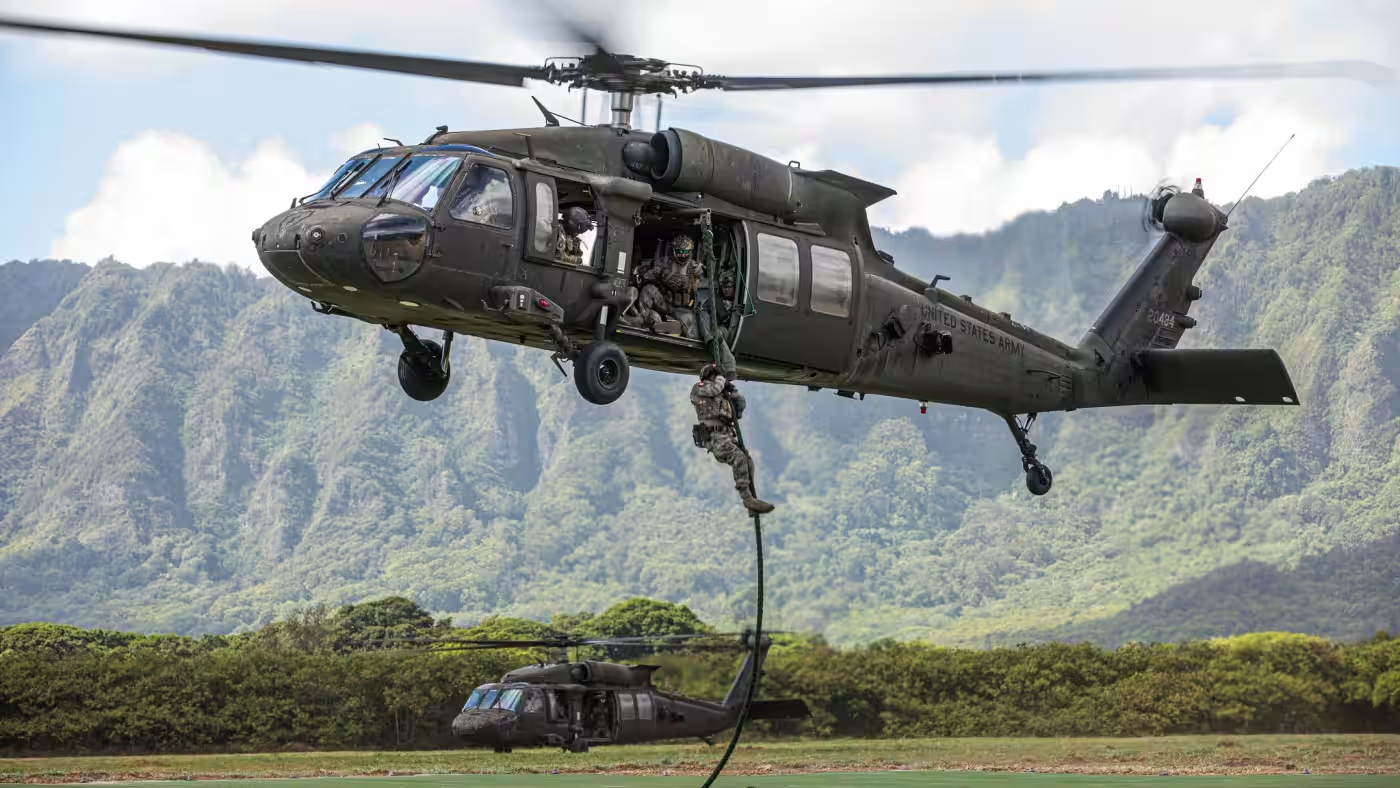Construction setbacks have impacted a long-range radar system being built by the U.S. Air Force on the Pacific island of Palau, delaying the deployment of an asset designed to boost observational abilities of Washington and its allies in the region.
The Tactical Multi-Mission Over the Horizon Radar (TACMOR), proposed in 2017, was slated for completion in 2026. It includes two sites — a transmitter on Babeldaob Island and a receiver on Angaur Island.
The system is meant to “provide warfighters with the capability to close gaps in surveillance coverage in key regions of the Pacific area of interest to the United States and its Allies,” the Air Force’s 2025 Fiscal Budget says.
But the same document flags issues, saying the project is “not fully funded across the Future Years Defense Program,” and that “development, integration and test activities are delayed under the current profile.”
The setback stemmed from “delays from the related military construction project,” a spokesperson for the U.S. Air Force told Nikkei Asia last week.
“The USAF is evaluating the funding required to re-baseline TACMOR for fiscal years 2026 through 2030,” Capt. Jessica Cicchetto said in an email. “Additional information for the program will be available with the release of the fiscal year 2026 President’s Budget,” Cicchetto said.

Palau President Surangel Whipps Jr. told Nikkei last week at the Pacific Island Leaders Meeting in Tokyo that the transmitter site was under construction and going “full speed ahead.” But work on the receiver was “a little bit delayed,” because of issues with getting environmental permits on Angaur, he said. Authorities on the island, home to 114 people, had reportedly opposed clearance work for the site via legal action.
Palau, an archipelago of about 350 islands, is one of three “freely associated states” (FAS) with the U.S., together with the Republic of the Marshall Islands and the Federated States of Micronesia.
The relationship is governed by the Compacts of Free Association (COFA), under which the U.S. gets exclusive military access in exchange for economic support and rights for FAS citizens to live and work in the U.S. More than 94,000 FAS citizens live in the U.S. and over 1,000 serve in the U.S. military.
Together, the three Pacific nations span an area larger than the continental U.S. and play an increasingly important role in supporting America’s security presence in the region.
The U.S. has stepped up military exercises in the Western Pacific and is upgrading some World War II-era airfields on small islands as it hones its strategy to disperse assets outside the so-called first island chain in the event of a conflict with China. The approach is designed to make them harder to target with missiles. The efforts form part of the $27 billion Pacific Deterrence Initiative, the U.S. strategic plan to counter the “pacing challenge” of China.
The first island chain consists of a group of islands — including Taiwan, Okinawa and the Philippines — which China sees as its first line of defense. The second island chain in the Western Pacific runs from southeastern Japan out to Guam, the freely associated states, and south to Papua New Guinea.
“The bottom line is the U.S. has decided you can’t concentrate everybody in the first island chain. It’s foolish, especially as China continues to build its capabilities, so why not move them to that second island chain, where we also have American territories, Guam and Northern Mariana Islands,” said Derek Grossman, a senior defense analyst at RAND.
“Guam and the Northern Mariana Islands are like the hubs of U.S. military activity, and the freely associated states are, in theory, the spokes. … Think of it as a backstop to the first island chain, which within the last 10 to 15 years, and especially in the last five to seven years, has become far less secure,” Grossman said.
The U.S. is currently expanding the “strategically located” airport on Yap, one of the four constituent states of the FMI, and renovating the airfield on Tinian, an island in the U.S. territory of the Commonwealth of Northern Marianas Islands.
On the Palau island of Peleliu, the site of a bloody battle between the U.S. and Japan in 1943, U.S. Marine engineers recently renovated an airstrip as part of upgrades that will also improve the port.
According to budget documents from the U.S. Marines, Palau will form part of the planned “Global Prepositioning Network” — depots with food, water, equipment, munitions, fuel, spare parts, medical supplies and other material to support “rapid employment of expeditionary forces.”
Funding allocated to getting the Palau site ready totals almost $10 million. According to spokesman for the U.S. Marines Chuck Little, the site was on Palau, but he said they could not confirm whether it would be on Peleliu at this stage.
“We intend to use this site to store equipment and supplies that could support humanitarian assistance and disaster relief operations and training from rotational Marine Corps Forces,” Little said in an email.
“Collectively, DoD will continue our work in a whole-of-government approach for Palau to ensure the mission of defense and deterrence, while upholding commitments made in the COFA agreement,” Little said, referring to the U.S. Department of Defense.
As they become more strategically important, the freely associated states also face more risk.
Whipps had previously asked the U.S. to permanently deploy Patriot missiles, which have been used in exercises, to the country for protection following the decision to base TACMOR on Palau. He told Nikkei he accepted the U.S. response that the threat level did not warrant such a system for now. He said there had been no discussions about a permanent U.S. base with a troop presence.
“If they have to have a permanent facility in Palau that’s up to debate, but there are those of us that would say it’s a good thing, those who say, ‘Now we become a target for China.’ So it’s an ongoing discussion,” he said.





